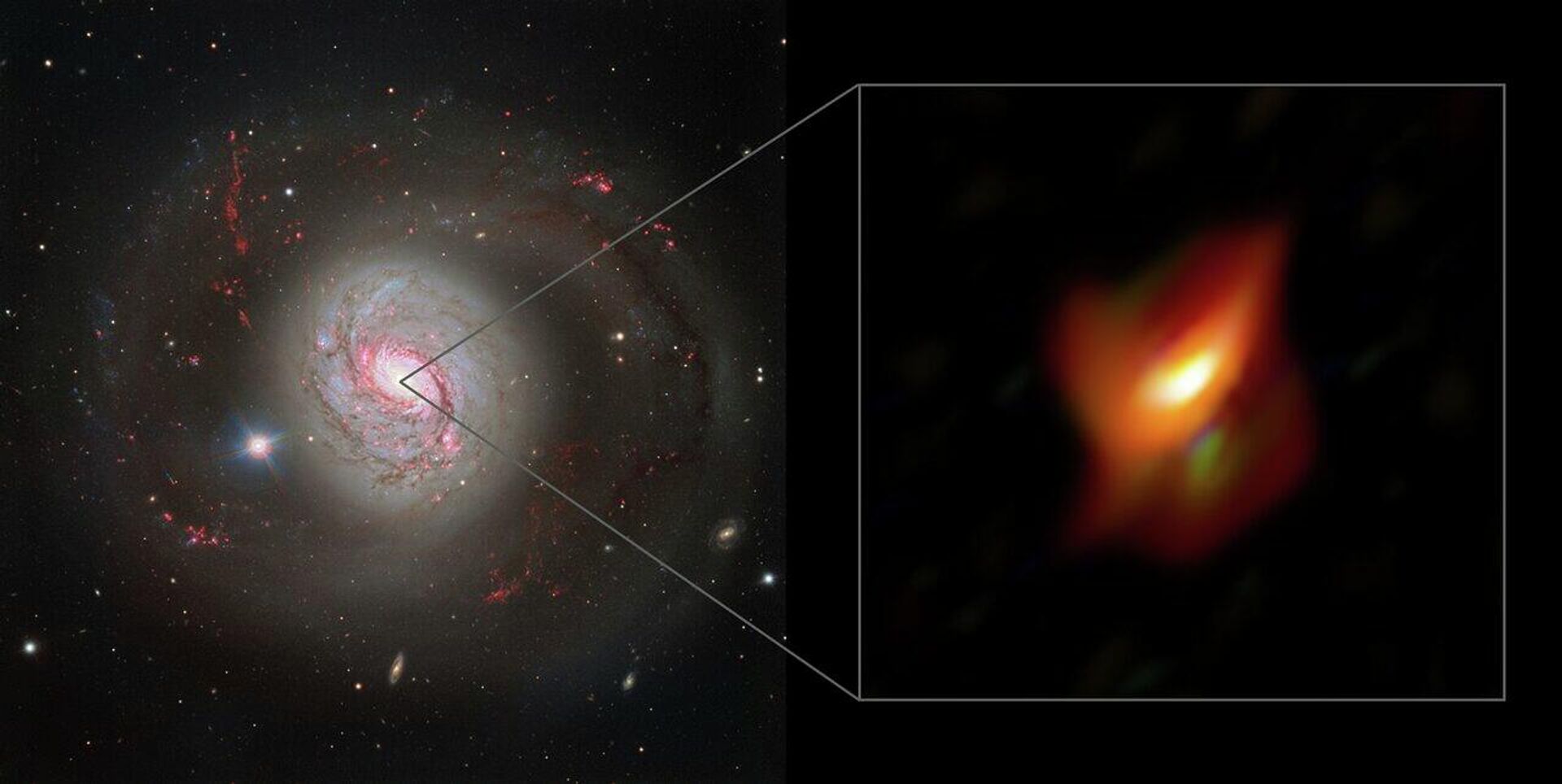Scientists Confirm Existence of Supermassive Black Hole Inside Cosmic Dust Cloud Outside Our Galaxy
03:13 GMT 19.02.2022 (Updated: 17:02 GMT 12.04.2023)

CC0 / /
Subscribe
Messier 77 or NGC 1068, where the black hole was found, is a barred spiral galaxy in the constellation Cetus, located about 47 million light-years from Earth.
Astronomers from the European Southern Observatory (ESO), have confirmed the existence of a supermassive black hole hidden by a cloud of cosmic dust in the center of an active galaxy Messier 77, validating 30-year-old theories.
In an article published in the peer-reviewed journal Nature earlier this week, the research team, led by Violeta Gamez Rosas from Leiden University in the Netherlands, stated that the observations, which were made with the ESO's Very Large Telescope Interferometer (VLTI) in northern Chile, shed fresh insight on galaxies with an active galactic nucleus (AGN) at their core. These bright spots are fed by the gas and dust that falls into the galaxy's central black hole, causing the region to shine brighter than the rest of the galaxy.
"Our results should lead to a better understanding of the inner workings of AGNs," Gámez Rosas said in a statement from the ESO. "They could also help us better understand the history of the Milky Way, which harbors a supermassive black hole at its center that may have been active in the past."
According to modern science, AGNs come in a variety of shapes and sizes. Some emit radio waves in bursts, some glow brightly, and others, like the Messier 77 AGN, are more muted.

The left panel of this image shows a dazzling view of the active galaxy Messier 77 captured with the FOcal Reducer and low dispersion Spectrograph 2 (FORS2) instrument on ESO’s Very Large Telescope.
© Photo : ESO/Jaffe, Gámez-Rosas et al.
Astronomers proposed a theory around 50 years ago that all AGNs are driven by supermassive black holes, under the so-called Unified Model theory. The visual variations between AGNs, according to the theory, are due to the position of the black holes in relation to them as seen from Earth.
As with Messier 77, if the AGN obscures the black hole from Earth's perspective, the black hole will be completely blocked.
Astronomers had already discovered evidence to support the Unified Model, such as heated dust near the center of Messier 77. However, questions remained regarding whether this dust could totally conceal a black hole and hence explain why this AGN flashes in visible light less brilliantly than others.
“The real nature of the dust clouds and their role in both feeding the black hole and determining how it looks when viewed from Earth have been central questions in AGN studies over the last three decades,” Gámez Rosas explained. “Whilst no single result will settle all the questions we have, we have taken a major step in understanding how AGNs work.”
The brightness of an AGN is determined by how much light from the central black hole is hidden by dust and gas in the surrounding area. Because the huge ring of dust and gas entirely obscures the black hole from our view, Messier 77 seems more subdued than other AGNs, according to the research.
The researchers were able to piece together an image of the dust cloud and locate where the black hole lies within it by analyzing the temperature fluctuations seen in the photographs.
